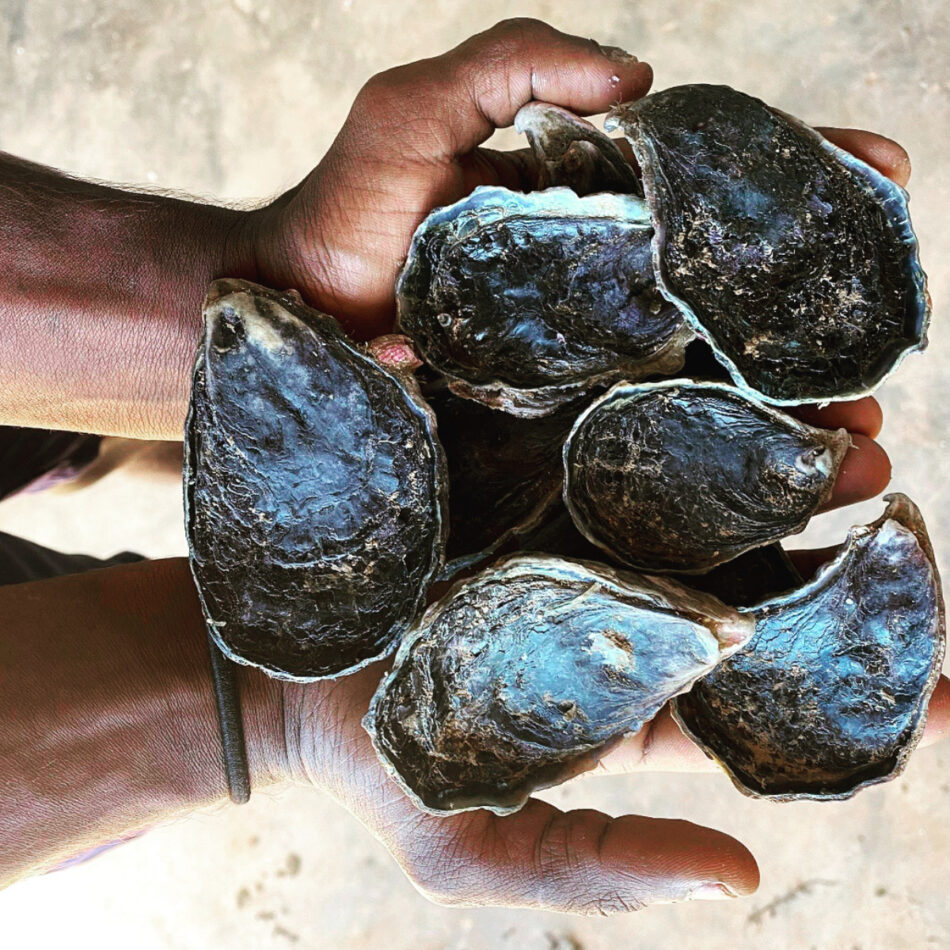Northern Australia officially has its own “brand” of Tropical Rock Oysters – with the native Blacklip Rock Oyster (Saccostrea echinata) formally added to the Australian fish name database.
The application to the Australian Fish Names Committee was made by researchers from the Northern Territory Government’s Darwin Aquaculture Centre (DAC) and industry partners the Yagbani Aboriginal Corporation and Anindilyakwa Land Council, as part of a Cooperative Research Centre for Developing Northern Australia (CRCNA) research project.
Being added to the database means all species of Saccostrea echinata produced or sold in Australia must be identified as Blacklip Rock Oyster.
Northern Territory project lead Matt Osborne, Program Leader Aquaculture and Regional Development at the Department of Industry, Tourism and Trade said establishing a standard naming convention removed ambiguity and confusion around the use of the name across multiple tropical species.
“There are many different species of tropical oysters across Northern Australia and they are often difficult to visually tell apart. To add further confusion, the naming of tropical oyster species is not well defined, with confusing taxonomy and inconsistent use of common names. This lack of consistency has created challenges for regulators, farmers and hatcheries.
“A consistent approach to naming a species not only strengthens consumer confidence about the provenance of oysters grown in Northern Australia, but it also underpins effective species-based management and improves regulation and management of food safety across supply chains,” he said.
The Northern Australian Tropical Rock Oyster R & D project is at its midpoint, with researchers in Western Australia, the Northern Territory and Queensland working on developing and investigating new hatchery and farming techniques and grow-out performance of two native tropical rock oyster species. Their work has culminated in record hatchery production at the DAC in Darwin and the Hillary’s marine shellfish hatchery near Perth in Western Australia.
CRCNA CEO Anne Stünzner said the work undertaken as part of the $4.1 million project has been supported by the development of a world-first hatchery manual for the Blacklip Rock Oyster.
“I congratulate the DAC team for publishing this protocol, which brings together 10-years of research and refinements to deliver the only reliable hatchery protocol for this species.
“It was this ground-breaking protocol which underpinned the DAC team’s spat breeding success, late last year,” she said.
Mrs Stünzner said the research team’s partnership with Traditional Owners in the NT and WA has also ensured the project’s success to date with more than a million juvenile oysters relocated to farms on Country, off the coast of Karratha (WA) and Darwin (NT).
“Involving local people in the trialling of farming techniques on their Country provides long-term sustainability of this new industry and ensures Australian and global consumers will be enjoying Blacklip Rock Oysters for years to come,” she said.
Media contact
Carla Keith, CRCNA Communications Manager | 0499 330 051


